A Capacity Improving Scheme in Multi-RSUs Deployed V2I
2019-08-13YueyunChenhuoengTaohuaChenushenLiuandAlanYang
Yueyun Chen,Ζhuo ΖengTaohua ChenΖushen Liu and Alan Yang
Abstract: The communication reliability and system capacity are two of the key performance indicators for Internet of Vehicles (IoV).Existing studies have proposed a variety of technologies to improve reliability and other performance,such as channel selection and power allocation in Vehicle-to-Infrastructure (V2I).However,these researches are mostly applied in a single roadside unit (RSU) scenario without considering inter-cell interference (ICI) of multi-RSUs.In this paper,considering the distribution characteristics of multi-RSUs deployment and corresponding ICI,we propose a reliable uplink transmission scheme to maximize the total capacity and decrease the interference of multi-RSUs (mRSU-DI) in condition of the uplink interruption performance.In the proposed mRSU-DI scheme,ICI is depressed by dynamic channel and power allocation algorithm.A heuristic algorithm based on penalty function is proposed to obtain the optimal power allocation solution of the model.In addition,we realize the scheme in both given conditions of channel state information (CSI) and channel state distribution,respectively.The results show that the proposed scheme can both improve the system capacity and guarantee the reliable transmission in both premises.
Keywords: IoV,inter-cell interference,power allocation,reliable transmission.
1 Introduction
Internet of Vehicles (IoV) is well recognized as an important research field for the future wireless communication.As an emerging technology,IoV can provide information exchange by Vehicle-to-Vehicle (V2V) and Vehicle-to Infrastructure (V2I) communications to improve system performance.Since all vehicle nodes in the vehicle network share limited spectrum resources,the spectrum utilization,transmission reliability,system throughput,and the stability of the routing mechanism are all key performances of IoV.In addition,interference is more severe because of network topology changing rapidly.Achieving realtime and reliable communication in IoV has become a considerable challenge.
Wireless network resource allocation scheme is one of the effective methods to improve the performance of IoV system.In the multi-RSUs deployment scenario,a joint radio resource management mechanism must be applied to ensure reliable communication of vehicles,especially the transmission of urgent traffic information.Due to the mobility of vehicular terminals and the changes in network topology,traditional resource allocation schemes cannot be effectively applied to the IoV scenario.It is necessary to propose target resource allocation methods according to the characteristics of IoV.
In LTE-A networks,inter-cell interference (ICI) issue has been solved to a certain degree.While LTE allows full reuse of the entire bandwidth in each cell (Reuse-1),enabling high spectral efficiency and high throughput for cell-center users,inter-cell interference from neighboring cells results in low throughput for cell-edge users.Several schemes have been proposed to improve the throughput of cell-edge users [Hamza,Khalifa,Hamza et al.(2013)],of which the Soft Frequency Reuse (Static-SFR) scheme,Fractional Frequency Reuse (Static-FFR),and (Reuse-3) scheme are the most prominent ones for downlink ICIC.The inter-cell interference may be also minimized by a proper inter-cell power control.The basic idea is to achieve maximum radio resource utilization without sacrificing the quality of service (QoS) [Abaii,Liu and Tafazolli (2008)].However,the call admission control of such a power control scheme results in enormous signaling overheads across the network when the system is fully loaded.When it comes to IoV,a resource allocation scheme with low signaling cost becomes more necessary.
In IoV resource management,most existing research is implemented in single cell scenario or heterogeneous vehicular networks.In single-cell scenario,the research mainly involves vehicle grouping,channel selection,and power allocation of V2V users,V2I users and cellular users.A framework with vehicle grouping,reuse channel selection,and power allocation has been developed in Ren et al.[Ren,Liu,Liu et al.(2015)] to maximize the sum rate or minimum achievable rate of V2V links while restraining the total interference of uplink transmission.A low complexity graph-based resource allocation algorithm has been proposed in Liang et al.[Liang,Xie,Li et al.(2018)] to maximize the system capacity with V2V links and V2I links capable reusing the same resource.Ren et al.[Ren,Liu,Liu et al.(2015);Liang,Xie,Li et al.(2018)] obtain a typical resource reuse strategy within V2V and V2I links.Therefore,proposed algorithms only decrease the intra-cell interference between V2V users and V2I users.Considering the slow vehicular channel variation,a radio resource management has been proposed in Sun et al.[Sun,Ström,Brännström et al.(2016)] adapting to the large-scale fading,where cellular users and V2V users can use the same RB.A heuristic algorithm,SOLEN,has been proposed to solve the channel allocation and power control problem,the proposed model take V2V SINR threshold and system capacity into consideration to meet reliability and transmission latency requirements of the system.Further discussion of the model has been put forwards in Sun et al.[Sun,Yuan,Ström et al.(2016)],where the same resource can be shared among a cellular link and multiple V2V links.However,Sun et al.[Sun,Ström,Brännström et al.(2016);Sun,Yuan,Ström et al.(2016)] only take intra-cell interference between cellular users and V2V users into consideration.Thus,proposed algorithms cannot be well applied to multi-RSUs scenario.A set of RBs shared by cellular users,V2I users and V2V users results in complex intra-cell interference.
Graph-based algorithm are widely used in resource allocation problem to mitigate interference [Zhang,Cheng,Yao et al.(2013);Hoang,Le and Le-Ngoc (2016);Zheng,Liu,Zheng et al.(2013);Yang,Zhang,Cheng et al.(2016)].Liang et al.[Liang,Xie,Li et al.(2018);Zhang,Cheng,Yao et al.(2013)] has proposed several channel allocation schemes based on graph theory to avoid co-channel interference.Similarly,in Hoang et al.[Hoang,Le and Le-Ngoc (2016)],a graph based allocation algorithm is proposed to efficiently assign sub-band.Zheng et al.[Zheng,Liu,Zheng et al.(2013)] solved cooperative transmission problem in vehicular networks by graph based scheduling algorithm.A graph coloring based algorithm is proposed to investigate RB assignment and power allocation problem in cellular-VENET [Yang,Zhang,Cheng et al.(2016)].Graph theory can be used in channel allocation problem to simplify the solving process.Nevertheless,it is necessary to get accurate real-time CSI when formulating the network graph,which is not available in signaling congestion.It is difficult to be applied in multi-RSU scenario due to the complexity and variety of network topology.In LTE-A cellular networks,graphic approach is also a normal way to mitigate interference [Chang,Tao,Zhang et al.(2009)].By creating an interference graph of a multi-user network,the scheduler can identify and separate sources of strong interference.A significant disadvantage of this framework is that the current algorithms in the literature are sub-optimal because the graph-coloring problem is inherently complex and not linear.Furthermore,the graph-based algorithms thus far are optimized in multi-user environments where many users are located in the cell-edge areas i.e.,macro cells.In the case of femtocells where a limited number of users exist in each cell,performance degradation may be seen when using a graph-based algorithm.
On the other hand,to offload the increasing traffic from macro cell,heterogeneous vehicular networks (HVNs) are proposed in Zheng et al.[Zheng,Zheng,Chatzimisios et al.(2015)].Research mainly focuses on connection,resource allocation and protocol design.Zheng et al.[Zheng,Zheng,Sun et al.(2015)] proposed Markov queuing based performance analysis models in HVNs in terms of system throughput,transmission delay,dropping probability,and queue length,while connection ability is also an important performance in heterogeneous networks.In Xiao et al.[Xiao,Shen,Zeng et al.(2018)],a non-cooperative game-theoretic framework is proposed for radio resource management in a heterogeneous wireless access environment to maximize the utility of connections.To meet the increasing demand of vehicular communication,resource allocation has become an effective method to improve system performance.Cognitive radio (CR) technology is used into HVNs to improve spectrum utilization.In Wang et al.[Wang,Haider,Gao et al.(2014);Vu-Van and Koo (2011)],RSUs with CR technology are sensitive to the vacant spectrum resource of surroundings.Macro users and RSU users can effectively adopt orthogonal spectrum resource to reduced cross-layer interference.The spectrum sharing scheme can only be applied when real-time CSI is informed to all users in the HVNs,which is achievable when control channel is vacant.In Huang et al.[Huang,Ding,Meng et al.(2018)],a heuristic algorithm is proposed to jointly solve communication connection and resource allocation in Software-Defined vehicle networks.However,the reliability performance of HVNs,such as outage probability,has not been considered in Huang et al.[Huang,Ding,Meng et al.(2018)] so that it cannot guarantee reliable transmission.Cheng et al.[Cheng,Mi,Huang et al.(2018)] proposed a theoretical method to evaluate the connectivity of HVNs,while protocol strategy such as gateway selection and routing are discussed in Chen et al.[Chen,Liu,Qiu et al.(2018);Alawi,Sundararajan,Alsaqour et al.(2017)].
IoV varies in multiple network architecture forms.Different resource optimization schemes should be designed according to the specific scenario to effectively enhance the network performance.The previous research of resource allocation in IoV concentrates on a single cell or heterogeneous cell scenario.However,severe co-frequency ICI among multi-RSU has not been considered.
In this paper,we propose a resource allocation scheme to decrease interference among multi-RSUs (mRSU-DI),which can maximize the total capacity of vehicle users in multi-RSUs while guaranteeing interruption performance of uplink transmission.The heuristic algorithm based on penalty function is used to carry out the power solutions.In addition,the proposed mRSU-DI is performed under two different channel conditions,respectively.i.e.known CSI and known channel state distribution.It can reduce ICI and effectively improve the reliability and system capacity in multi-RSU deployment scenario.
The paper is organized as follows.Section 2 introduces the scenario and system model;Section 3 introduces the algorithm for mRSU-DI;Section 4 includes performance evaluation;and Section 5 carries out conclusions.
2 System model
A typical multi-RSU scenario with co-frequency deployment is presented in Fig.1.If vehicles in neighbor RSUs are allocated with the same resource block (RB),they will suffer from co-frequency interference,i.e.,ICI.In Fig.1,for example,a vehicular userv1,1inRSU1and another userv2,1inRSU2suffer from ICI while both capturingRB1.
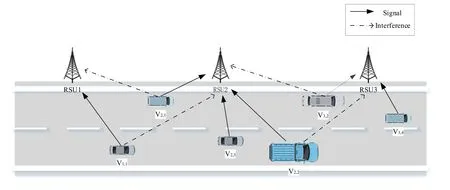
Figure1:A typical multi-RSUs scenario
Communicating with relatively high power may result in low signal-interference-noise ratio(SINR),and further cause system capacity reduction,even communication interruption.
In general,vehiclevm,iinRSUmsuffers from co-channel interference fromvm-1,iandvm+1,iinRSUm-1andRSUm+1respectively.And the corresponding SINR ofvm,iis

wherePm,iis the uplink transmission power ofvm,i;αm,m,iandhm,m,iare path loss and smallscale fading parameters betweenvandRSU;σ2is the white Gaussian noise power.
According to the standards proposed by 3GPP in Release 14,the path lossαm,m,ibetweenvm,iandRSUmis

wheredm,m,irepresents the distance fromvm,itoRSUm,in km.
The proposed model is established on partial imperfect CSI to suppress the impact of rapid change and expiration.In a V2I link,RSU needs to periodically detect CSI and approximate the small-scale fading channel to the first-order Gauss-Markov process[Liang,Kim,Jha et al.(2017)],which is related to the speed of vehicles and feedback period.The amplitude of small-scale fading channel after change and expiration can be described as

whereβi,jrepresents the real time channel before change and expiration,ei,jrepresents difference term which follows complex Gaussian distribution and is independent ofβi,j.i.e.,CN (0 ,1-).CN (⋅)denotes the complex Gaussian distribution.εcan quantifyi,jthe correlation between two consecutive slots andεi,j=J0(2πfd T).J0(⋅)denotes a first-order zero-order Bessel function.fddenotes a maximum Doppler shift,andfd=vfc c.vdenotes a vehicle speed,andfcdenotes a carrier frequency.Further,according to expression (3),channel gain of V2I link can be described as

wheregm,m,irepresents channel gain betweenvm,iandRSUm.Similarly,the channel gain betweenvm-1,iandRSUm,which is interference gain,can be expressed as

We propose a resource allocation scheme to decrease the ICI in the multi-RSUs scenario(mRSU-DI).The detailed scheme is described as follows:
First,we allocate channel resources to vehicles in different RSUs according to the location of vehicles.Interference between vehicles results from reuse of the same RB and gets more severe when interfered vehicles get closer.As vehicles are arranged in sequence on the road,location based channel allocation scheme is simple but efficient.
In the driving direction,vehicles in every RSU can be sorted by their locations.For example,vehicles in themth RSU can be sorted aswherevm,ilocates in front ofvm,i-1in moving direction,andNmis the number of vehicular users inRSUm.In this case,vm-1,i,vm,iandvm+1,iare allocated with the same RB,where
Location based channel allocation can provides efficient spectrum utilization and prevents two close vehicles from reusing the same RB while vehicles are uniformly distributed on the road.Further,parts of accidental interruption of vehicle communication can be avoided,which improve the reliability of the communication system.In the Rayleigh channel,the channel gain betweenvm,iandRSUmobeys the negative exponential distribution with the parameterCommunication interruption ofvm,ioccurs whenSINRm,iis lower than the reception thresholdγ,and the distribution of the outage probability [Cheng,Mi,Huang et al.(2018);Shalmashi,Miao and Slimane (2013)] can be expressed as

where

The system model of mRSU-DI scheme can be described as

whereMis the total number of RSU on the road,Nmis the number of vehicular users inRSUm,Crepresents the total system capacity.And the expressions ofCvaries according to the given channel conditions.The detailed situations are discussed in Section 3.
3 Algorithm for mRSU-DI
The state of control channel can also affect data channel transmission.When vehicles are only informed of channel state distribution,the system generates low signaling overhead.However,mRSU-DI cannot achieve the best optimization to system capacity in this case,due to the non-instantaneous channel information.On the other hand,when vehicles are informed of CSI,an accurate allocation can be applied in data transmission.It demands large signaling overhead and idle control channel state.Corresponding model can be described as follows.
3.1 Channel state distribution given condition
When vehicles are only informed of channel gain distribution,assumingh~E(λ0),the capacity expectation ofvm,ibased on channel state distribution is given by

The computational complexity of capacity is related to the exponential integral.In this paper,the finite term of the convergent series is used to approximate the exponential integral,thereby reducing the amount of calculation.Whena<0the convergent series is given by

whereγOis Euler-Mascheroni constant,andγO≈0.5772156649015328606...We take the first 20 terms of the infinite series as the approximation of the exponential integral.In this case,the expectation of total system capacityCDcan be written as

The complete system model can be described as

whereγis the minimum SINR reception threshold;p0is the minimum outage probability threshold of uplink transmission.Pmaxis the maximum transmission power of every vehicular user.
The proposed mRSU-DI is aimed at maximizing the expectation of total system capacity,subjected to the interruption probability and maximum transmit power of every vehicular user.As a result,a power allocation scheme can be obtained to maximize the system model when guaranteeing the system reliability.In addition,as vehicular users are only informed of channel state distribution,signaling overhead is relatively low.This power allocation scheme can be used in the scenario where signaling is scarce.
3.2 CSI given condition
Under the condition of obtaining channel state information (CSI),the small scale fading channel gain can be reasonably assumed to be a set of discrete values subjected to Rayleigh distribution.Therefore,the instantaneous total capacity of the systemCIcan be derived by

Correspondingly,the complete system model can be described as

Similarly,a set of power solution can be derived to maximize the instantaneous system capacity when ensure uninterrupted communications.Although vehicular users are informed of instantaneous CSI at the expense of relatively high signaling overhead,mRSU-DI under CSI given condition can obtain a better optimization.And it is more suitable for a scenario where control channel is idle.
To analyze the complexity of the problem,we firstly assume that available power of vehicular users are discrete K values.Thus,there areNkcombinations of solutions.The time complexity of finding or verifying the optimal solution isO(Nk),which is much longer than the polynomial time.In addition,after discretization,the problem can be regarded as a multiple knapsack problem.As a result,the original problem is at least as difficult as the multiple knapsack problem.The multiple knapsack problem has been proved to be an NP-hard problem.Therefore,our optimization problem is also an NP-hard problem.The particle swarm optimization is adopted to design a penalty function based heuristic algorithm for its effectiveness to find optimal solution.Conventional particle swarm algorithm is applied to unconstrained problems while proposed models have several constraints.Therefore,we use the penalty function to transform the multi-constraint problem into unconstrained fitness function.The fitness function can be expressed as

wheref(x)represents objective function;G1is interruption constraints vector;G2is power constraints vector;αandβare the corresponding penalty factor vectors.
Accordingly,the fitness function of channel state distribution given conditionfDcan be described as


The penalty-based particle swarm optimization is described as follows.First,set the population size and initialize the particle’s dimensions,position and velocity,e.g.,where P1represents the position of the first particle,the elements in P1represent the initialized transmission power of all vehicular users in the system.Then,a penalty function is used to derive the fitness function according to the optimization model.fDis fitness function under channel state distribution given condition,andfIis fitness function under CSI given condition.In each iteration,the fitness function is compared with the value in previous iterations to find a better solution.The position set,P ,and velocity set,v,of particles are updated according to the fitness function.At the same time,optimal fitness value of particle,b ,and the population,pb,are recorded,so do the optimal position of each particle,Pb,and the population,Ppb.Finally,if reaching the maximum number of iterations,the optimization process terminates and the optimal position of the population is the optimal power value while the maximum fitness value is the optimized system capacity.The detailed algorithm is described in Tab.1.
The position vector,Pi,and the velocity vector,vi,of particleican be updated by


whereandare given maximum and minimum values ofwt,trepresents current iteration times,Imaxrepresents the maximum number of iteration.In addition,inertia weigh can effectively accelerate the convergence of the solution.As the number of iterations increases,the iterative weight decreases first and then increases,which is helpful to find the global optimal solution.

Table1:Heuristic Algorithm for mRSU-DI
4 Simulation results
Above all,Fig.1 illustrates the multi-RSU deployment scenario.Three RSUs are adjacently placed on the roadside.Each RSU is configured with 50 RBs of the same band,and can achieve 500 m coverage radius.Vehicles randomly distribute on the road with speed of 60 km/h,and establish uplink V2I communication links with RSUs.CSI of V2I links can be informed by connected RSU to vehicles.The path loss model of V2I links can be given by expression (2) and the small-scale fading channel is Rayleigh channel,modeled as a negative exponential distribution with parameterλ0.In addition,vehicular users in the same RSU utilize orthogonal RBs to avoid severe co-frequency interference.The detailed values of simulation parameters are presented in Tab.2.

Table2:Simulation Parameters

Distance of neighboring RSUs 1000 m Coverage radius of each RSU 500 m The number of RBs in a RSU 50 180 kHz The number of vehicular users [0,200]Bandwidth of a RB,B Path loss model [],,,,128.1 37.6lg()m m i m m i dB d α = +Small-scale fading model Rayleigh channel Outage SINR thresholdγ 23 dBm AWGN noise power 0.01 Maximum transmission power 5 dB Outage probability 0 p max P 2σ-114 dBm
The expectation of system capacity with respect to vehicular users in different transmission algorithms is illustrated in Fig.2.System capacity continues increasing when the total number of vehicular users vary from 0 to 200.When the total number of users reaches relatively large number and RBs in the system are all occupied,the expectation of system capacity gradually stops increasing,for the resource is saturated.The proposed Algorithm-Dist,achieved by mRSU-DI when channel state distribution is given,provides larger improvement in system capacity compared to fixed power transmission schemes.And with user number increasing,the improvement becomes more obvious.
Instantaneous capacity of different transmission schemes is shown in Fig.3.The proposed Algorithm-Inst where CSI is given,has better performance in system capacity than fixed power transmission strategies,for SINR of vehicles is not proportional to transmission power.Similarly,the system capacity stop rising when RBs of all RSUs are all occupied.However,the improvement of mRSU-DI can be more significant.
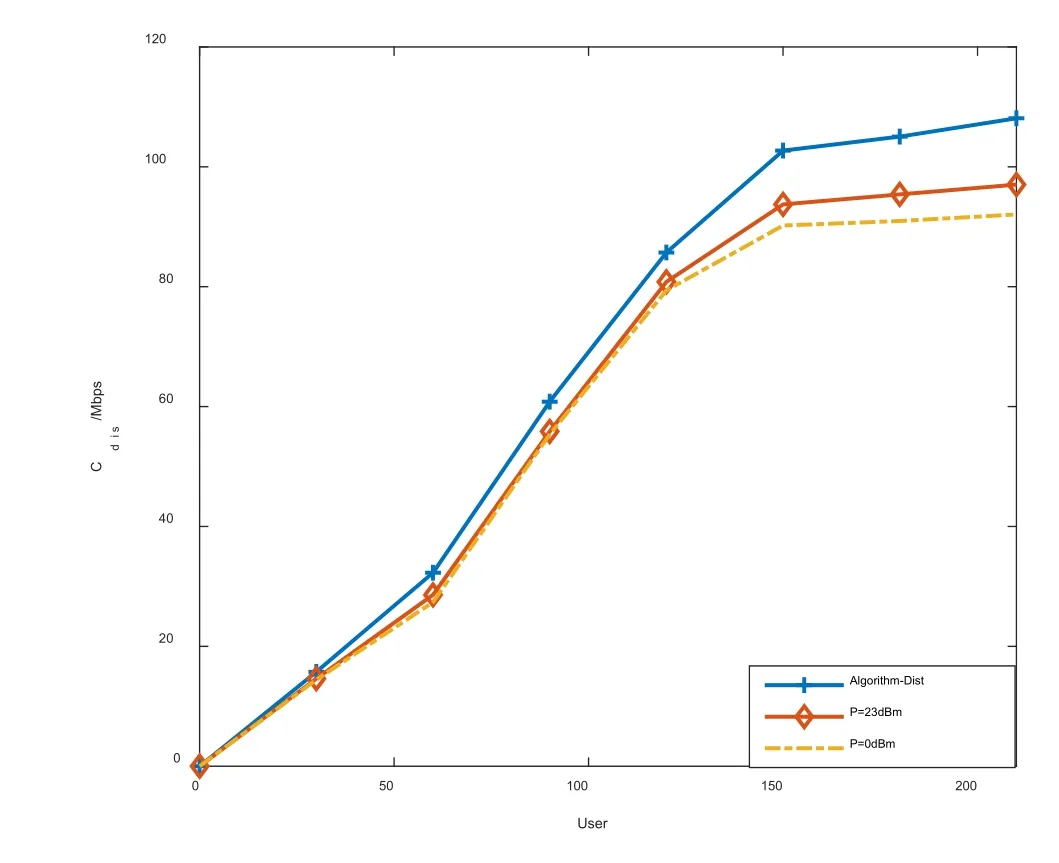
Figure2:The expectation of system capacity with respect to the number of users
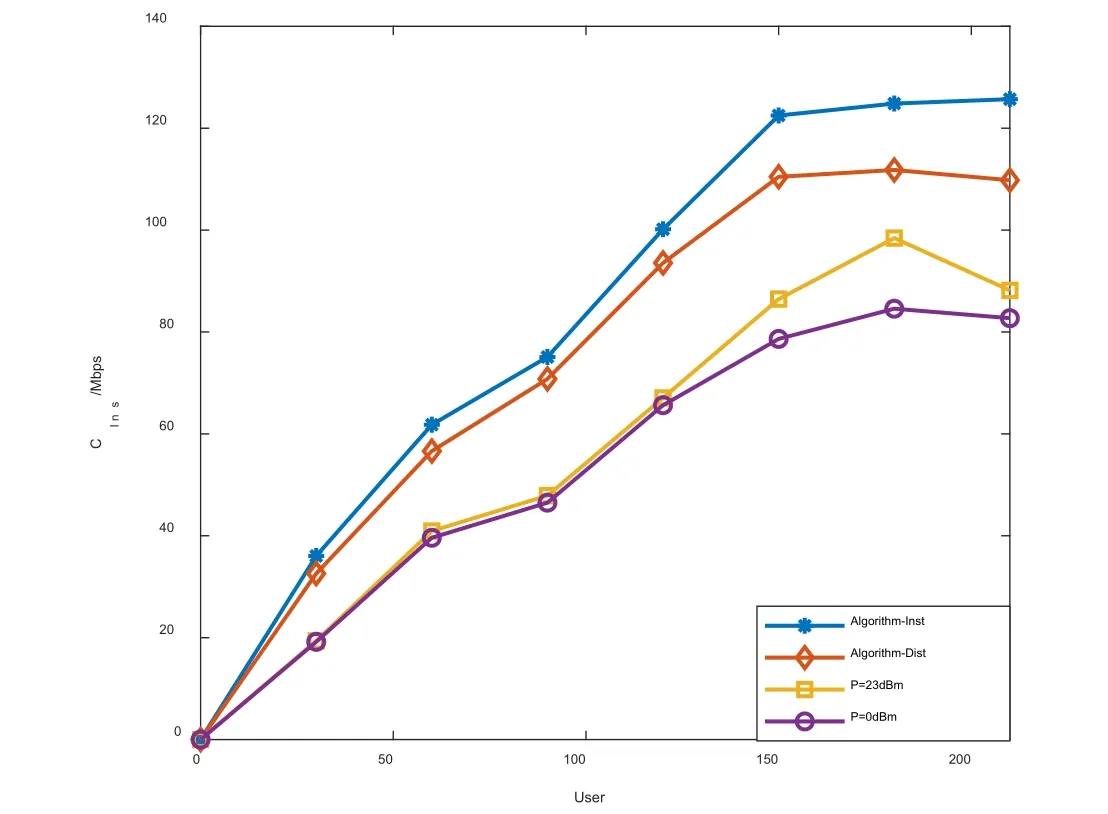
Figure3:Instantaneous system capacity with respect to the number of users
Fig.4 illustrates instantaneous system capacity with respect to increasing SINR threshold,when the total number of vehicular users are 70,andγvaries from 0 dB to 20 dB.The result shows that the total system capacity will decrease when the minimum QoS requirement of vehicular users increase.And the degradation results from less users can reach the SINR demand.Although interference tolerability causes the reduction of system performance,mRSU-DI scheme under two channel conditions can enhance capacity to make up for the decrease.Algorithm-Inst can achieve the best performance while Algorithm-Dist carries out a suboptimal solution.We can observe that proposed algorithm can achieve the same capacity with the lowest outage SINR threshold under the same conditions,which can guarantee more reliable transmission compared to fixed power transmission schemes.

Figure4:Instantaneous system capacity with varying SINR thresholdγ
In Fig.5,we find out the system capacity of vehicular users achieved by proposed power control algorithm compared to fixed power transmission schemes with respect to different outage probability threshold,where the total number of vehicular users are 70 and the SINR threshold is 5 dBm.It is observed that the instantaneous system capacity increases if higher outage probability of vehicular users is allowed.The increase results from the fact that larger value of acceptable interruption probability stands for more insensitive to interference from neighboring RSU.Thus,it allows more vehicles with low SINR to build up communication links.Nonetheless,the proposed Algorithm-Inst and Algorithm-Dist achieve better capacity performance over conventional fixed transmission scheme.The system capacity can be maximized with Algorithm-Inst,which demands CSI of all transmission links.
Both channel state distribution given condition and CSI given condition can contribute to system capacity improvement.As instantaneous system capacity is a more accurate measurement in reality,in Fig.6,we compare the instantaneous system capacity CDF of mentioned 4 transmission schemes in case of different outage SINR thresholdsγ.When the total number of vehicular users are 70,andγvaries from 0 dB to 5 dB,the result indicates Algorithm-Inst,under CSI-given condition,provides the best optimization of the total system performance.Algorithm-Dist,under channel state distribution given condition,is a suboptimal solution to the problem.And they both have better performance than fixed power transmission schemes.Transmitting with the maximum power,23 dBm,can cause severe ICI,which results in low system capacity.Similarly,when user transmitting in relative low power,0 dBm,system capacity is still low because of the low signal power.

Figure5:Instantaneous system capacity with varying outage probability threshold p0
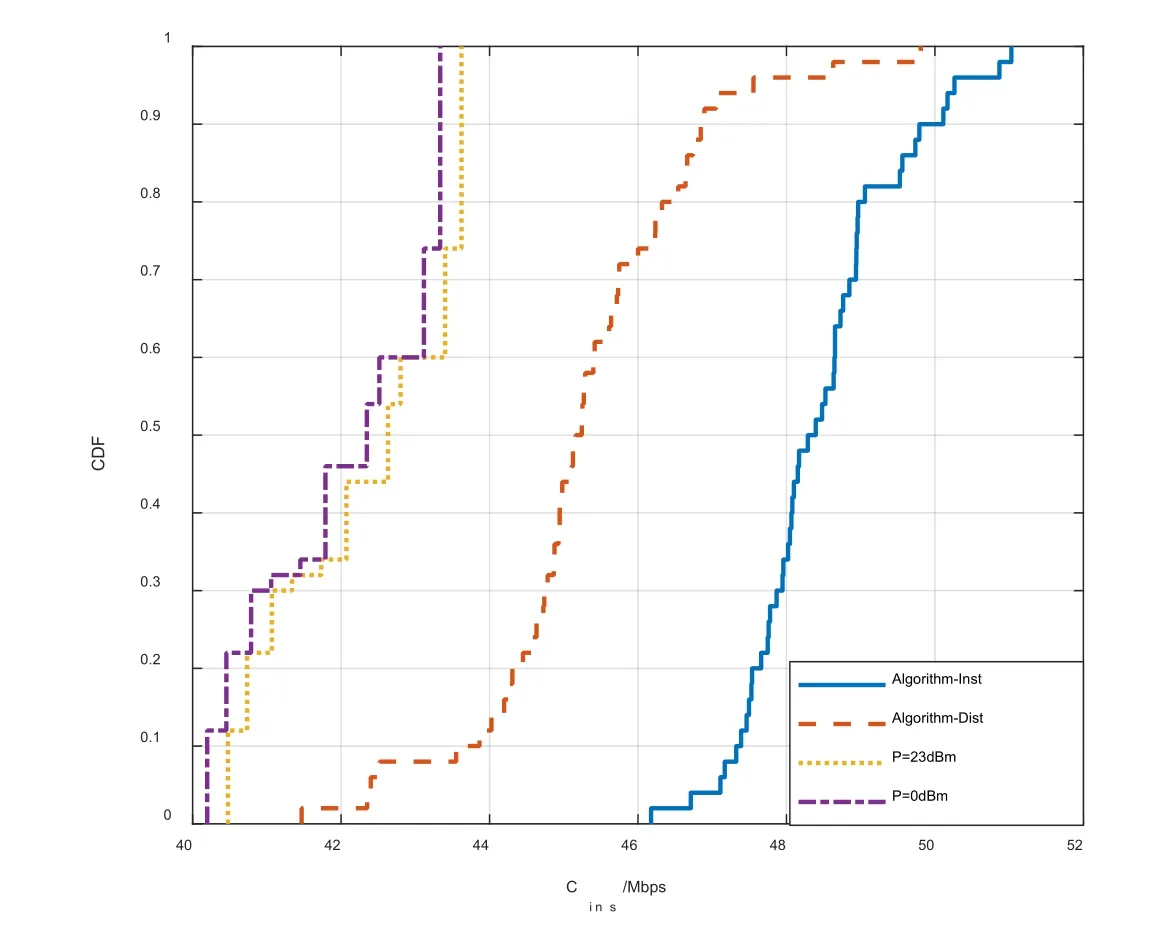
Figure6:CDF of instantaneous system capacity performance with differentγ
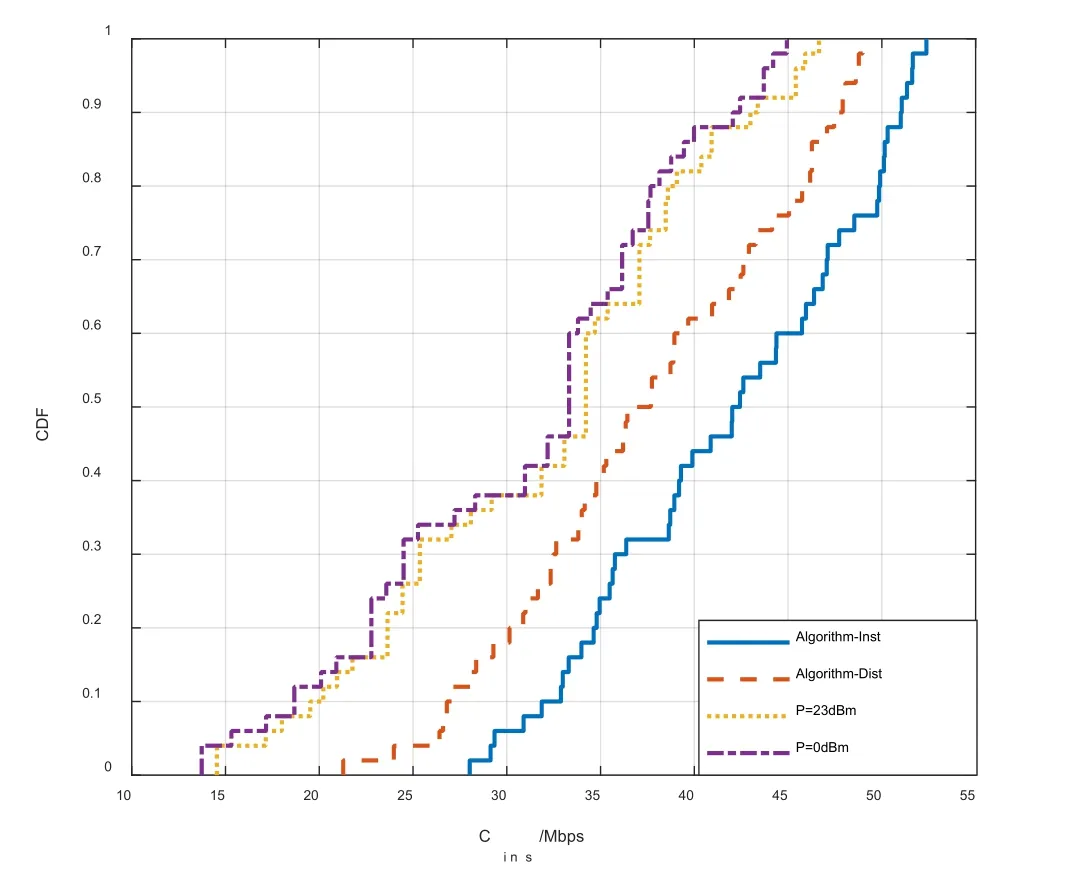
Figure7:CDF of instantaneous system capacity performance with different outage probability threshold p0

Figure8:Converge performance of mRSU-DI
Instantaneous system capacity CDF of mRSU-DI with different outage probability thresholdp0is shown in Fig.7.When total number of vehicular users are 70,andp0varies from 0.001 to 0.1,proposed Algorithm-Inst contributes to the largest proportion of high capacity users due to accurately allocation.Algorithm-Dist is a suboptimal solution to the problem,which can be used in signaling congestion situation.The results show that mRSU-DI scheme has better performance than fixed power transmission schemes.Transmitting with the maximum power can cause severe ICI and cause high ICI.While transmitting in relative low power,0dBm,can only receive the low signal power on RSU side.
Fig.8 is the convergence performance of mRSU-DI algorithm.Algorithm-Inst converges in 300 times while Algorithm-Inst converges in 250 times.Due to the nonlinearity between uplink transmission power and SINR,mRSU-DI scheme can dynamically adapt the uplink transmission power to the maximum capacity strategy.Under CSI given condition,mRSU-DI scheme can achieve higher instantaneous capacity at expense of signaling overhead,which is more accurate and targeted.And it can obtain suboptimal solution when channel state distribution is given.In this case,our scheme can release control channel resource to avoid signaling congestion.
5 Conclusion
In the paper,we proposed mRSU-DI scheme in IoV to maximize the total system capacity,where 3 RSUs are continuously deployed on the roadside.The particle swarm optimization algorithm based on penalty function is used to ensure the reliable transmission and maximize the system capacity.In addition,for different signaling overheads,the paper respectively analyzes optimization performance of proposed model under two different conditions,channel state distribution given and CSI given.
The results show that the best performance of the algorithm can be reached when CSI is given.It can provide 11% capacity improvement whenp0is assumed to be 0.001 compared to the fixed power transmission scheme of 23 dBm,and 16% compared to the fixed power transmission scheme of 0 dBm.However,since real-time acquisition of CSI generates a large amount of signaling overhead,a channel state distribution based optimization strategy can be adopted when signaling resources are limited.Vehicular users can obtain a suboptimal power allocation scheme under the condition that only the channel distribution is given.It can achieve 6% improvement compared to fixed 23dBm transmission scheme,and 11% compared to fixed 23 dBm transmission scheme under the same conditions.It is beneficial to reduce the occupation rate of the control channel,and to avoid congestion while the total capacity of the system is improved.Compared with the fixed power transmission strategy,the proposed power control strategy can significantly increase the total system capacity.And the effect is more obvious when the number of vehicles in the system is large.As guaranteeing the reliability and capacity of uplink transmission in IoV,the proposed power allocation scheme can be applied to the future vehicle resource scheduling in multi-RSUs scenario.
Acknowledgement:This work was supported by National Science and Technology Major Project No.2017ZX03001021-005.
Appendix
The capacity of vehicular uservm,iwhen channel state distribution is given can be derived as
We simplify (20) to (21) following from Gradshteyn et al.[Gradshteyn and Ryzhik (2014)].

杂志排行
Computers Materials&Continua的其它文章
- A Multi-Objective Decision-Making Approach for the Optimal Location of Electric Vehicle Charging Facilities
- Multi-Rate Polling:Improve the Performance of Energy Harvesting Backscatter Wireless Networks
- A Novel Scene Text Recognition Method Based on Deep Learning
- Fuzzy C-Means Algorithm Automatically Determining Optimal Number of Clusters
- Ab Initio Molecular-Dynamics Simulation Liquid and Amorphous Al94-x Ni6 Lax (x=3-9) Alloys
- Robust Re-Weighted Multi-View Feature Selection
